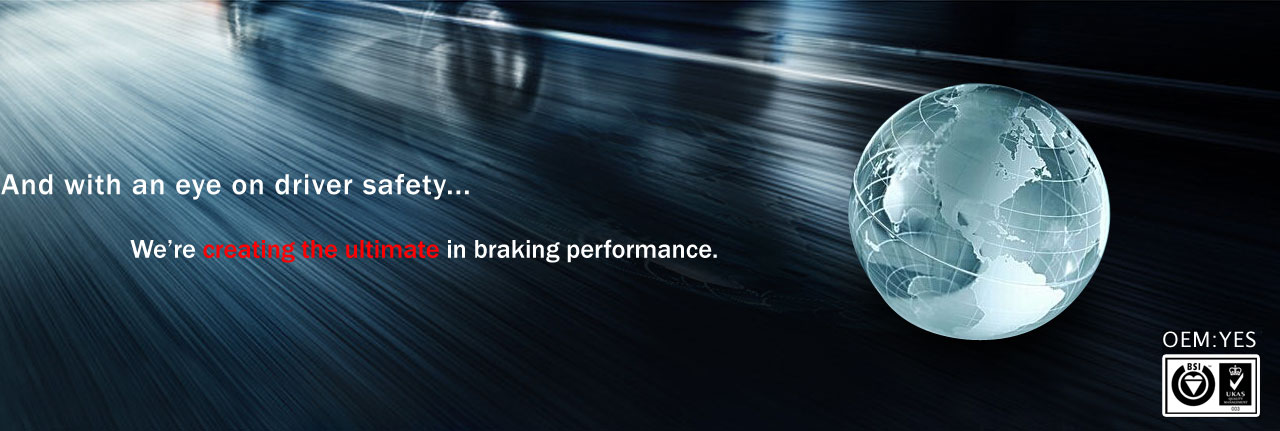Brake Pad Standards In The Automotive Aftermarket
A few months back I wrote an article on brake pad standards. I received a lot of questions about the article. The main question I received was about Department of Transportation (DOT) and National Highway and Traffic Safety Administration (NHTSA) Federal Motor Vehicle Safety Standards (FMVSS) and how they apply to aftermarket products.
In retrospect, I should have explained FMVSS standards a little more. The confusion comes from the spirit of these regulations, which doesn’t specify or endorse one technology over the other. The standards are written to set a bar that a manufacturer must meet, that is it.
For example, if a brake pad manufacturer wanted to make a FMVSS 105-, 126- or 135-approved brake pad, they would need four things:
1. Proving grounds with a large area of concrete with a .9 friction level as specified by NHTSA.
2. Proving grounds with a hill at a specific incline to test the park/emergency brakes.
3. A new vehicle, or at least one that is very well maintained.
4. Very expensive test equipment and engineers to operate it.
To pass FMVSS 105 and 135, a “robotic leg” applies a specific pressure on the pedal to help gauge whether or not the vehicle stops within the minimum distance required (it is a little more complex than that). FMVSS 105 and 135 were not written with aftermarket brake pad manufacturers in mind. They were written with the assumption that an inspector might pull a new vehicle off an assembly line or a cargo ship to test.
If a brake pad manufacturer wanted to certify their entire brake pad product line under FMVSS 105, they would need to keep a inventory of vehicles from 1968 to 2002. For FMVSS 135, they would need a fleet of vehicles ranging from 2000 to current (the two-year gap in model years from FMVSS 105 to 135 is for platform changeover). Brake pad manufacturers do not have the space, time or money to do this. Enforcement is another issue. If brake pad manufacturers can’t afford to keep an inventory of test vehicles, what makes you think that NHSTA can afford to?
Some brake pad manufacturers do use brake dynamometers to simulate the mass, weight distribution and other performance characteristics of a vehicle to perform a “virtual” FMVSS test on a set of brake pads. But, it is not an official FMVSS test.
Recently, a trade association issued the statement, “It is illegal to market a product that does not conform with an applicable FMVSS or would take a vehicle out-of-compliance with a safety standard (‘make inoperative’).”
Sadly this is the law. It is applied evenly to new cars and unevenly to the aftermarket. For some products like brake hoses, fuel lines and tires, there are enforcement mechanisms.
For aftermarket parts that require complex and expensive on-vehicle testing, the manufacturer is held to the “spirit of the law” by the government. But, if there is an incident or fatal crash, they will start to ask questions, very expensive questions.
Could replacement brake pads one day be required to meet FMVSS standards? Probably not because of the huge burden it would put on aftermarket brake pad manufacturers. The U.S. could, however, implement a standard similar to the European Union’s ECE R90. This test is performed on a dynamometer and certifies that a replacement pad, shoe, rotor or drum is within 15% of the original equipment components.
2016-08-12 21:50:35
ADD:No. 1, Xiaban, Xiufeng Village, Shekou Town, Fu'an City, Ningde City, Fujian Province TEL:0086-0593-6388368||6558596 FAX:0086-0593-6338966 E-mail:brake@fjhuari.com / huari3348@126.com
Copyright ? 2013 Fujian Huari Automotive Parts Co., Ltd. All Rights Reserved.
Copyright ? 2013 Fujian Huari Automotive Parts Co., Ltd. All Rights Reserved.






